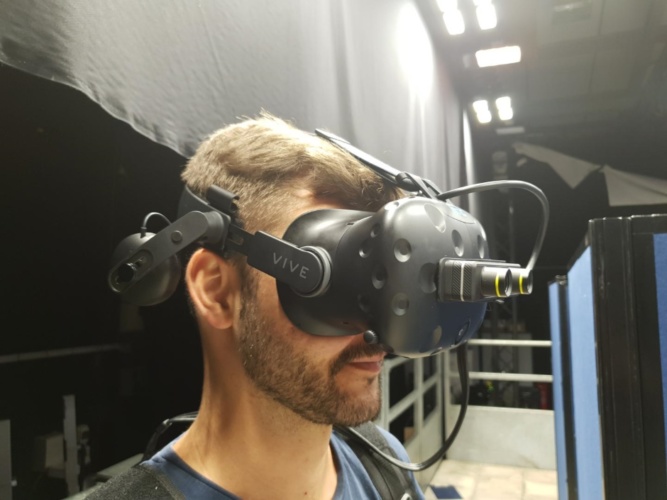
Glaucoma is a group of degenerative eye diseases that affect the optic nerve and is a leading cause of irreversible blindness. In the UK, it is estimated to represent 11 per cent of serious sight impairment cases.
Smart drainage device could help save sight of people with glaucoma
The study, from the Crabb Lab, at City, University of London, suggests that potential applications could include helping policymakers better assess the impact of visual impairment on patients, and helping architects to design more accessible buildings.
Twenty-two volunteers who did not have glaucoma took part in the study, with participants wearing a HMD while performing various tasks in either virtual or augmented reality.
In the virtual reality task, participants were placed in a simulation of a 'cluttered' house. Moving their eyes and head allowed them to look around it in order to find a mobile phone hidden somewhere in the house.
In the augmented reality task, participants navigated a real-life, human-sized 'mouse maze', which they viewed through cameras in the front of the HMD.
According to the Crabb Lab, sensors in the HMD tracked the position of the participant's eyes, allowing the software to generate a blurred area of vision, called 'scotoma', that obstructed the same portion of their visual field, wherever they looked.
The scotoma was created using medical data from a glaucoma patient, and either restricted vision in the upper part of the participant's visual field, or in the bottom part. Scotoma was absent in control trials.
Like real glaucoma patients, participants were slower to perform the tasks when the simulated impairment was present, and they made more head and eye movements. They also found the tasks particularly difficult when the vision loss obstructed the bottom part of their visual field. The results also showed how some people were better able to cope than others with an identical impairment.
OpenVisSim software created by the authors simulates visual impairment and has been shared online for others to use and develop. They said it is compatible with most HMDs and smartphones and supports a range of visual effects, designed to simulate the different symptoms associated with a range of eye diseases.
"While it's impossible to recreate exactly what it's like to have glaucoma, our findings suggest that digital simulators can at least allow people to experience some of the challenges that people with glaucoma face every day,” said first author, Dr Peter Jones, lecturer at the Crabb Lab. “We are now working with architects to explore whether sight-loss simulators can be used to design more accessible buildings and transport systems."
The study is published in the online journal, npj Digital Medicine and coincides with World Glaucoma Week 2020, which ends on March 14, 2020.




Nanogenerator consumes CO2 to generate electricity
Nice to see my my views being backed up by no less a figure than Sabine Hossenfelder https://youtu.be/QoJzs4fA4fo